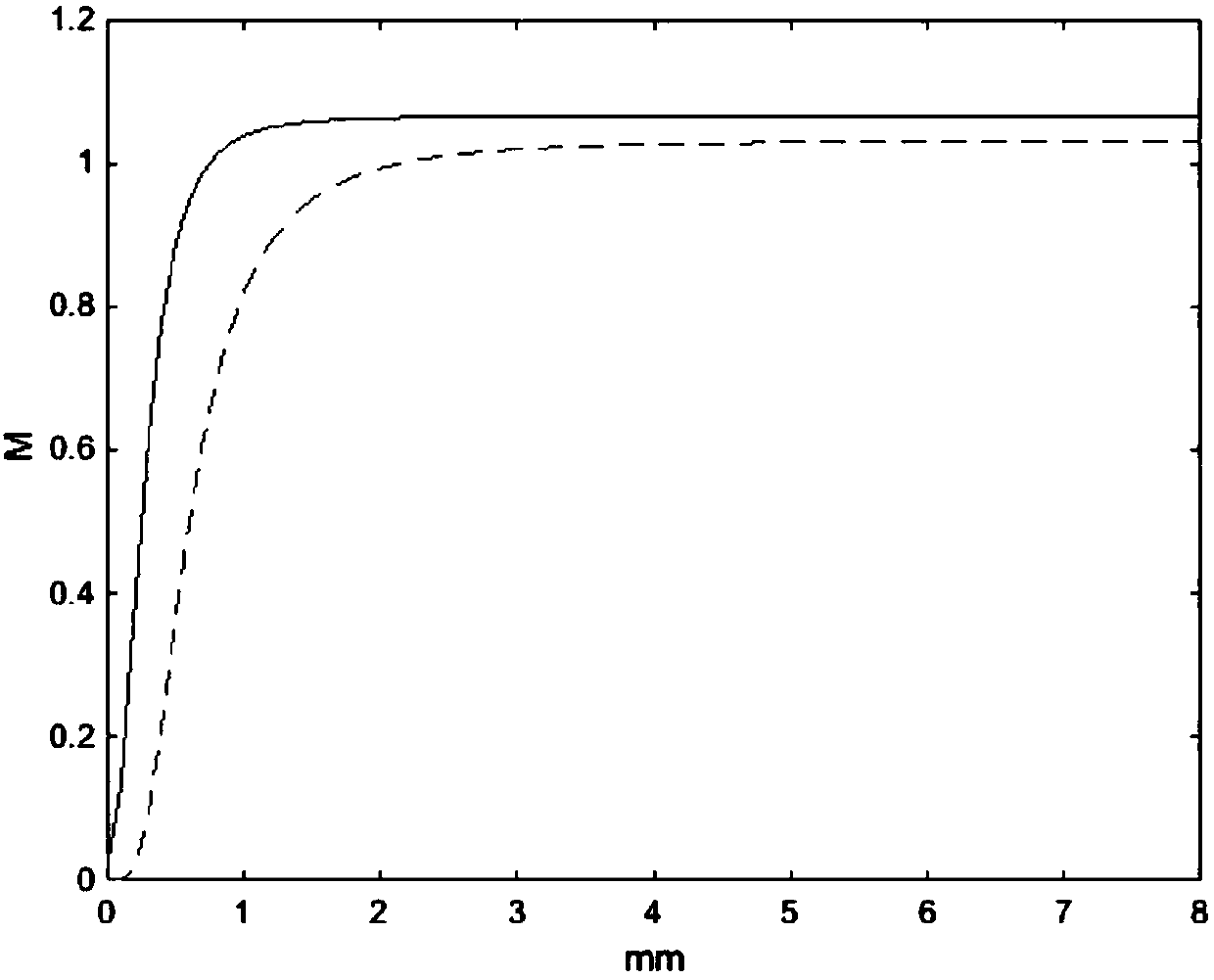Reflective intensity modulation (RIM) optical fiber sensor unequally spaced misalignment type compensation structure
An optical fiber sensor and intensity modulation technology, applied in instruments, optical devices, measuring devices, etc., can solve the problems of different reflectivity, optical fiber transmission loss measurement system error, etc., and achieve the goal of improving measurement linearity, improving performance, and eliminating range Effect
- Summary
- Abstract
- Description
- Claims
- Application Information
AI Technical Summary
Problems solved by technology
Method used
Image
Examples
specific Embodiment
[0024] Such as figure 1 As shown, a reflective intensity modulation optical fiber sensor with unequal spacing dislocation compensating structure, including a sending optical fiber, two receiving optical fibers, the two receiving optical fibers are placed on the same side of the emitting optical fiber, and the three optical fibers are placed between two by two. Arranged at the same distance c.
[0025] The three optical fibers are not flush at the end faces of the fibers. A set of single fiber pairs is formed by the misalignment a of the sending fiber and one of the receiving fibers 2 at the end face of the fiber as a reference optical path. The receiving fiber 2 and the other receiving fiber 3 are on the end face of the fiber. The misalignment b is formed, and the sending optical fiber and the receiving optical fiber 3 form another group of single optical fiber pairs as the measuring optical path. The above is the improved unequal-pitch equal-core dislocation compensation str...
PUM
 Login to View More
Login to View More Abstract
Description
Claims
Application Information
 Login to View More
Login to View More - R&D Engineer
- R&D Manager
- IP Professional
- Industry Leading Data Capabilities
- Powerful AI technology
- Patent DNA Extraction
Browse by: Latest US Patents, China's latest patents, Technical Efficacy Thesaurus, Application Domain, Technology Topic, Popular Technical Reports.
© 2024 PatSnap. All rights reserved.Legal|Privacy policy|Modern Slavery Act Transparency Statement|Sitemap|About US| Contact US: help@patsnap.com










